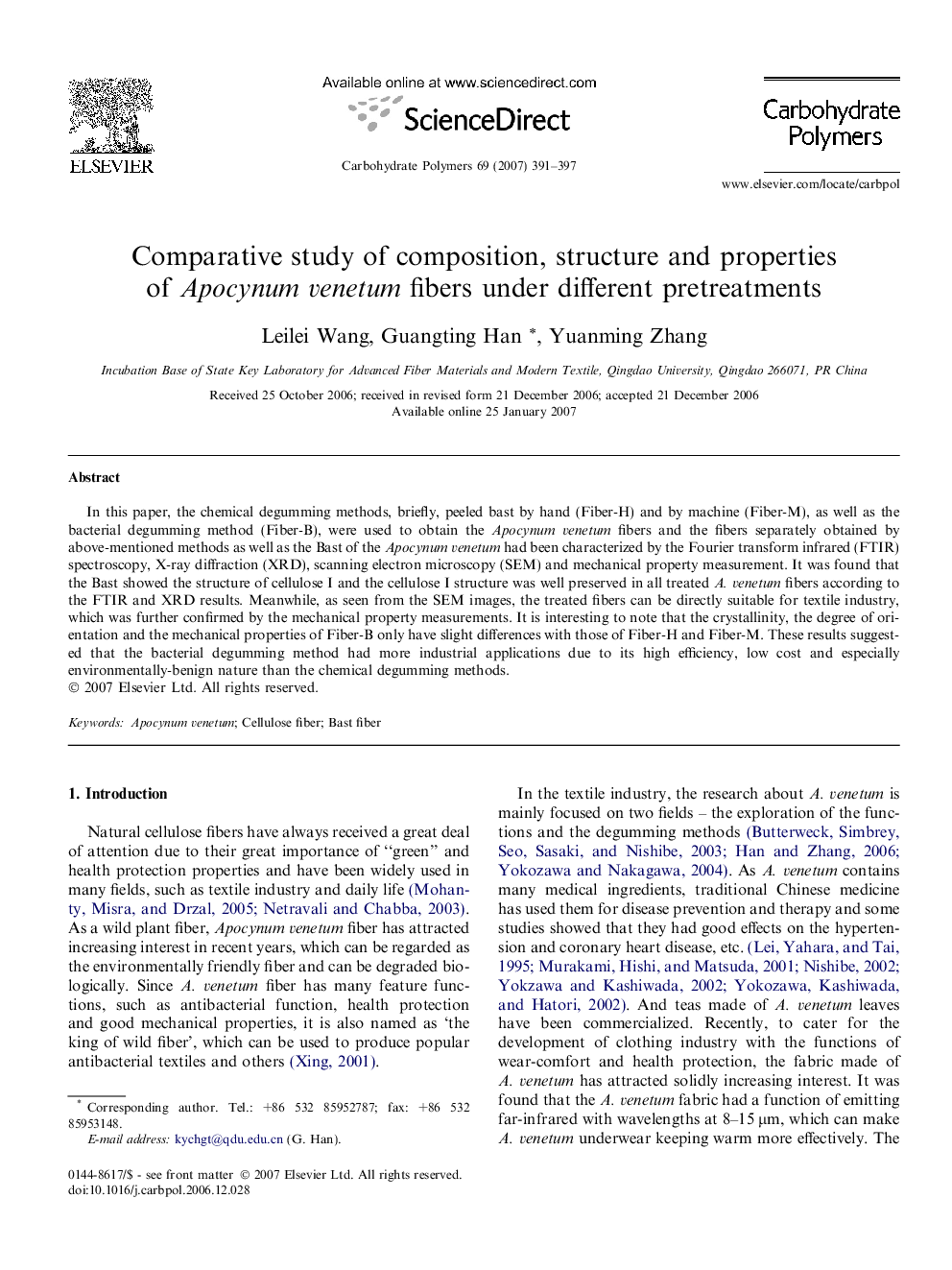| Article ID | Journal | Published Year | Pages | File Type |
|---|---|---|---|---|
| 1385386 | Carbohydrate Polymers | 2007 | 7 Pages |
In this paper, the chemical degumming methods, briefly, peeled bast by hand (Fiber-H) and by machine (Fiber-M), as well as the bacterial degumming method (Fiber-B), were used to obtain the Apocynum venetumfibers and the fibers separately obtained by above-mentioned methods as well as the Bast of the Apocynum venetum had been characterized by the Fourier transform infrared (FTIR) spectroscopy, X-ray diffraction (XRD), scanning electron microscopy (SEM) and mechanical property measurement. It was found that the Bast showed the structure of cellulose I and the cellulose I structure was well preserved in all treated A. venetum fibers according to the FTIR and XRD results. Meanwhile, as seen from the SEM images, the treated fibers can be directly suitable for textile industry, which was further confirmed by the mechanical property measurements. It is interesting to note that the crystallinity, the degree of orientation and the mechanical properties of Fiber-B only have slight differences with those of Fiber-H and Fiber-M. These results suggested that the bacterial degumming method had more industrial applications due to its high efficiency, low cost and especially environmentally-benign nature than the chemical degumming methods.
